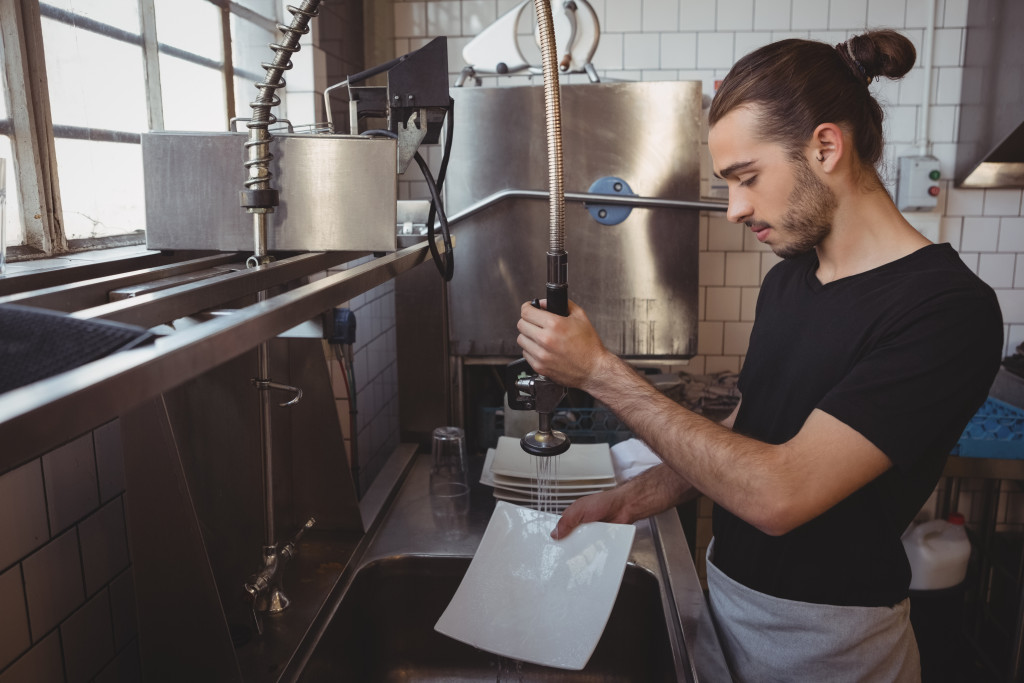Long ago, kitchens were just made for one purpose: to cook food. It wasn’t even part of households, and homeowners didn’t care what their kitchens looked like. But from lifeless kitchens in the past, kitchens have been transformed into soulful spaces of homes.
From modern kitchen appliances to kitchen islands with installed stone countertops, kitchens nowadays serve more than just a place for cooking. It is a place for connection, gathering, and celebration of relationships with family and friends. How this happened is what we need to know.
The Evolution of Kitchens
In the early civilizations of the Eastern Mediterranean, homes were equipped with open fireplaces or stoves made from clay or pieces of bricks. These cooking tools are placed outside the houses because they use fire that produces smoke. Food preparations, on the other hand, are done in a separate location.
Owners of smaller homes may not even have a space for cooking in their homes. Thus, they use communal spaces for preparing food. Meanwhile, people who had bigger homes may have food storage areas next to their “open kitchen.” Bigger residences like palaces in the ancient period could accommodate indoor kitchens. They have built-in chimneys that can carry the smoke out of the enclosed space.

The Medieval Period
During the early Medieval period, kitchens remain simple. The focus is more on storage as there were no refrigerators yet at that time. Hence, elaborate methods are needed to preserve food longer, and more spaces inside the home are dedicated to this.
Something changed by the 12th and 13th centuries. Wealthier homes realized the need for separate areas for food preparation and for serving food. This is because nobles of the late Medieval period did not want to smell like smoke or food. During this period, more homes had chimneys and fireplaces.
Yet, this was only for the wealthy. Penn State University states that as ordinary folks did not have kitchens in their homes, they relied on “fast food” or ready-made ones. It was only several years after that poorer homes started to have kitchens combined with dining areas; the wealthy, however, remained to have a separate dining area with servants cooking and preparing for them in a separate room or building.
The Role of Technology in Kitchen’s Evolution
In the 1800s, kitchens evolved together with the evolution of stove technology. The Rumford stove is the first multipurpose stove designed for households. The Library of Congress shares a cartoon depicting Count Rumford, who invented the Rumford stove.
In the 1830s, a smaller stove was created: the Oberlin stove. Because of its size, it can fit in most household kitchens. Both the Rumford and Oberlin stoves were still powered by coal or wood.
It was only in the 19th century when gas-powered stoves were introduced. As more homeowners started to cook at home, storage solutions were needed; this led to the invention of kitchen cabinets. The 19th century also saw the beginning of water pipes installed in homes, which immensely helped cook preparations in home kitchens.
The Kitchen as a Social Space
Kitchens, during the 19th century, became a social space for the middle class. Wealthier homes still have a division between dining and cooking areas, and servants were still the ones who were in the affluent kitchen. For the middle class, however, kitchens also serve as dining areas, and thus, they became a gathering space for families and friends.
The Open-plan Layout
As decades progressed, kitchen layouts were made with an open design that led to the living room. As is commonly known, living rooms are usually a place to interact; having a kitchen that directly flows to this space is a reason for transforming a kitchen’s purpose into more than just a place for cooking.
Food preparation became more of a social experience where everybody can be involved. It has become a way to show one’s graciousness as a host and a way to express someone’s creativity and showcase it to his or his guests.
The Modern Kitchen
The National Museum of American History discusses how modern kitchens have become part of American’s way of life. After the war, Americans are proud to showcase their kitchens equipped with modern appliances filled with processed food.
Media outlets such as television and magazines have been major players in influencing how people saw the importance of kitchens. The kitchen has become a status symbol and a sign of a person’s progress in life.
But one thing is clear: kitchens are now an essential part of life in the modern world. History has shown that throughout the years, people have been searching for a place to prepare food and, at the same time, interact with other people; hence, it brought the development of kitchens as we know it today.







